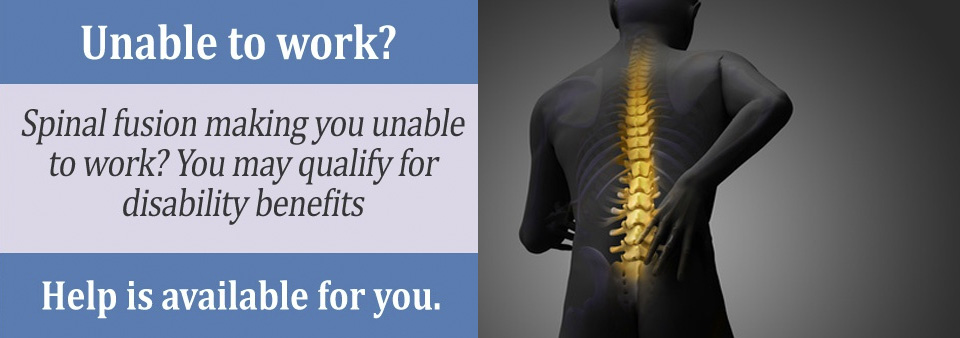Spinal fusion represents a medical procedure that replaces the typical healing process of mending two broken bones. Used to connect two more spinal vertebrae to limit motion, the procedure can lead to complications that can keep once-healthy workers sidelined for weeks on end.
If you recently went through a spinal fusion procedure, you might qualify to receive Social Security Disability Insurance (SSDI) benefits. The key to receiving benefits is to submit convincing medical evidence, such as copies of diagnostic reports and treatment regimens.
How Does Spinal Fusion Negatively Impact a Career?
Considered one of the most sensitive surgeries, a spinal fusion can trigger one or more negative outcomes. The area where the surgery took place might become infected, as well as take a long time to heal.
Excessive bleeding caused by damage to blood vessels requires immediate medical attention. Intense pain often develops after surgery, which makes it impossible for you to hold down a steady job.
Receiving a spinal fusion is especially problematic for professionals that work in jobs that require a considerable amount of physical labor.
Do You Qualify for Disability Benefits?
Eligibility for SSDI benefits is determined by the Social Security Administration (SSA). The first step is to show you worked in a job that is covered by Social Security. Then, you must meet the criteria established by the SSA for defining what is a disability.
The SSA refers to a medical guide called the Blue Book to determine SSDI eligibility. According to Section 1.04 of the Blue Book, spinal cord injuries are covered by the SSA. However, spinal fusion is a procedure to repair the damage done by an injury to the spine.
The procedure itself is covered only if you can demonstrate it was required to fix the medical issues caused by a spinal cord injury. If you cannot qualify for SSDI by referring to Section 1.04 of the Blue Book, you should consider referring to Section 11.00, which lists symptoms of various neurological disorders.

Getting a Second Chance
Since the SSA denies more than 50 percent of SSDI applications, your application might not be approved by the agency. If your application for SSDI to cover the costs associated with a spinal injury comes back denied, you can undergo a Residual Functional Capacity (RFC) assessment that is conducted by a physician representing Disability Determination Services (DDS).
The primary objective of an RFC assessment is to determine how a spinal fusion prevents you from meeting the mental and physical responsibilities placed on you by your employer. You also have the option of having your physician conduct an RFC, although DDS considers an in-house medical professional more credible.
Have a Disability Attorney Review Your Case
There is too much at stake for you to apply for SSDI benefits on your own. A state-licensed disability lawyer can organize all the documents needed to present a compelling case to the SSA. If you claim comes back denied, your attorney will help you undergo and RFC assessment with a DDS doctor or your physician.